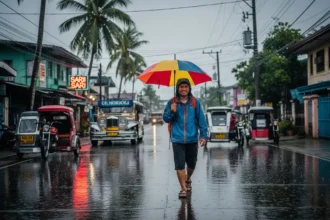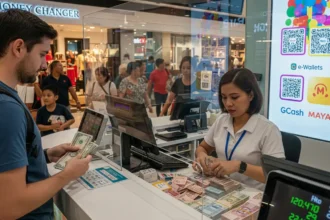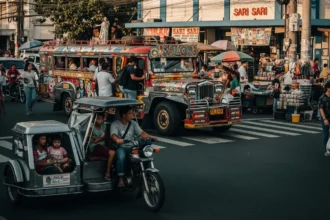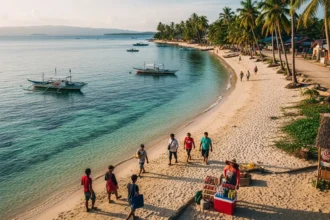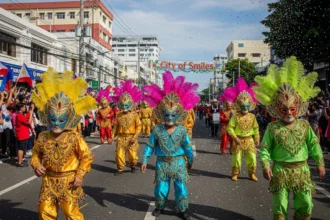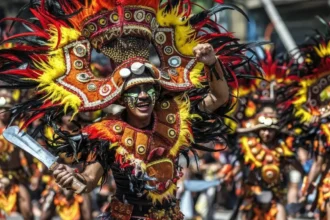The Philippines is a dream destination – white sand beaches, bustling cities, lush mountains, and warm, welcoming people. But for many, the biggest barrier to exploring the country isn’t distance or time – it’s money. Rising prices, expensive flights, and unpredictable costs can make travel feel like a luxury reserved for the few. Yet, thousands of Filipinos and backpackers manage to see the beauty of the islands without draining their wallets. How? By embracing budget travel strategies that work in real life.
- 🚍 Transportation: Getting Around on the Cheap
- 🛏️ Accommodation: Affordable Stays
- 🍲 Eating Like a Local
- 🎉 Free and Low-Cost Activities
- 📊 Table 2: Sample Budget for a 5-Day Trip (2025)
- 🛡 Travel Hacks for Pinoy Budget Travelers
- Frequently Asked Questions about Budget Travel in the Philippines
- 🌏 Budget Travel as a Mindset
- 🧳 References
Budget travel doesn’t mean sacrificing comfort or fun. It’s about smart choices – finding affordable accommodations, eating like a local, knowing when and where to book transport, and spotting hidden gems that don’t come with tourist price tags. The best part? Traveling frugally often leads to more authentic experiences. When you ride a jeepney instead of a Grab car, or eat in a carinderia instead of a chain restaurant, you don’t just save money – you experience the country the way locals do.
This guide will take you through everything you need to know to travel the Philippines on a tight budget. From cheap transportation hacks to food choices, accommodation tips, and money-saving tricks, you’ll learn how to maximize every peso. And with some planning and flexibility, you might be surprised at how much ground you can cover without ever feeling broke.
So whether you’re a student saving allowance, a worker with a modest salary, or a foreign traveler watching your exchange rates, here’s how to explore the Philippines without overspending.
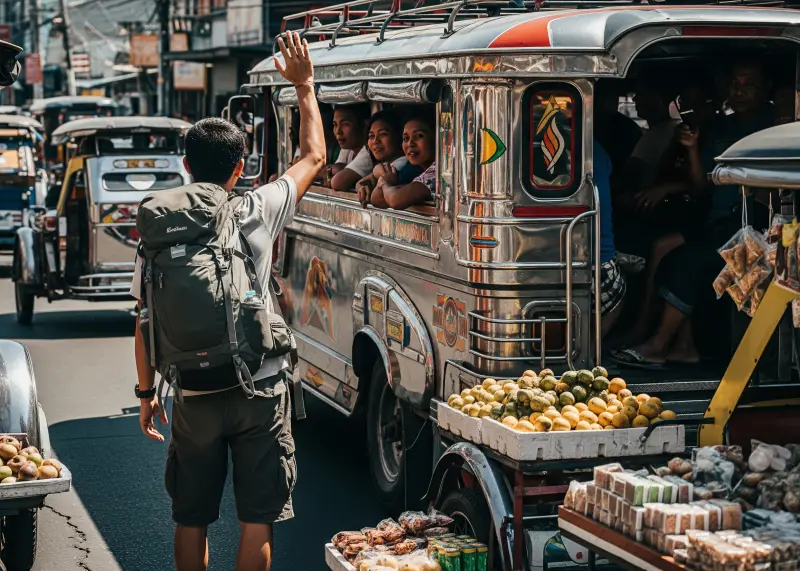
🚍 Transportation: Getting Around on the Cheap
Transportation is often where travelers overspend without realizing it. But in the Philippines, you don’t need to take expensive private transfers to get around – the public system is affordable and widely used.
Cheap Travel Options
- Jeepneys – The iconic Filipino ride, usually costing ₱12–₱20 for short trips.
- Buses – Comfortable for long distances; prices range from ₱150–₱700 depending on distance and class.
- Tricycles & Motorbikes – Great for short provincial rides; negotiate before hopping in.
- Ferries & RORO – Affordable inter-island travel, often cheaper than flights.
- Budget Airlines – Cebu Pacific and AirAsia frequently run promos like Piso Fare.
By combining these, travelers can move across Luzon, Visayas, and Mindanao without breaking the bank.
Table 1: Sample Transport Costs (2025)
| Mode of Transport | Average Cost | Best Use Case |
|---|---|---|
| Jeepney | ₱12–₱20 | Short city rides |
| Bus | ₱150–₱700 | Intercity/provincial |
| Tricycle | ₱30–₱100 | Short provincial rides |
| Ferry/RORO | ₱200–₱1,000 | Inter-island trips |
| Budget Airlines | ₱1–₱3,500 | Promo flights |
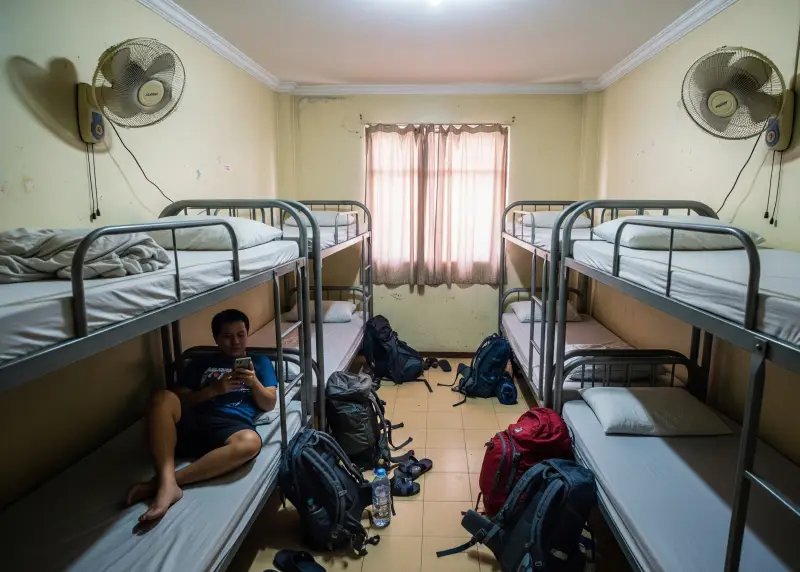
🛏️ Accommodation: Affordable Stays
Hotels in prime tourist areas can quickly eat up a big chunk of your travel budget. The good news is that there are plenty of alternatives that don’t just cost less, but also offer more authentic and social experiences. From backpacker-friendly hostels to family-run guesthouses, these options prove that comfort doesn’t always have to come with a steep price tag.
📲 Budget-Friendly Options
Hostels – A favorite among backpackers and solo travelers. Dorm-style rooms typically cost between ₱400–₱700 per night, making them one of the cheapest ways to stay in tourist areas. Many hostels include free breakfast, common lounges, and organized activities, making it easy to meet other travelers.
Guesthouses – Usually family-run, guesthouses are often more authentic and welcoming than chain hotels. They’re perfect for travelers who want local insights and home-cooked meals at lower prices. Rates vary but are generally much cheaper than hotels in the same area.
Airbnb – Still one of the best choices for groups splitting costs. Renting an apartment, condo, or house often works out cheaper per head than booking multiple hotel rooms. It also gives you access to kitchens and laundry, which can save more money over longer stays.
Capsule Hotels – A newer trend in the Philippines, especially in Manila and Cebu. For around ₱600–₱1,000 per night, you get a private sleeping pod with shared facilities. They’re clean, modern, and great for budget-conscious travelers who want privacy without the hotel price tag.
Homestays – Ideal in provincial areas where hotels are limited. Staying with a local family not only keeps costs low but also offers a unique chance to immerse yourself in local culture. Meals, stories, and even guided tours often come as part of the experience.
Affordable stays don’t just save you money-they can also make your trip richer and more memorable. Hostels connect you with fellow travelers, homestays and guesthouses bring you closer to local culture, and Airbnb or capsule hotels strike a balance between comfort and budget. To get the best deals, book early during peak seasons, and if you’re staying long-term, don’t hesitate to negotiate directly with owners-you’ll often secure better rates than what booking platforms advertise.
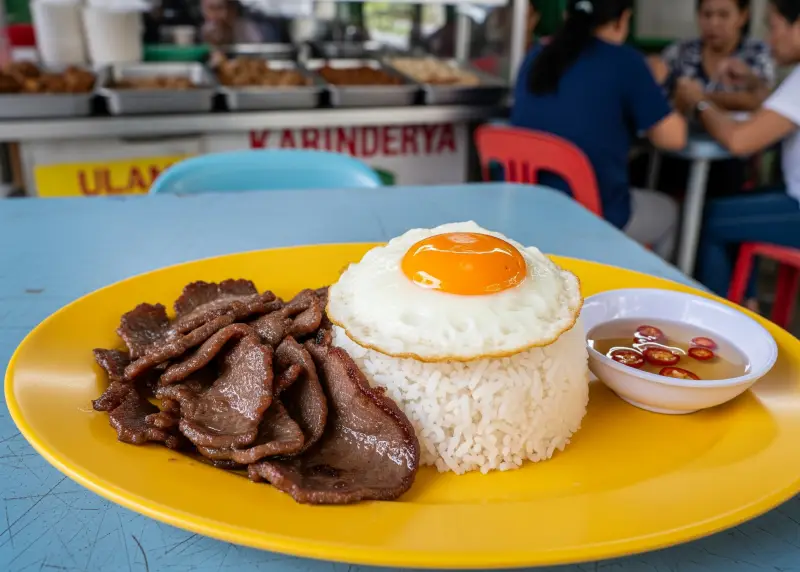
🍲 Eating Like a Local
Food is one of the easiest areas to save. Instead of dining in malls or tourist spots, follow where locals eat.
Carinderias & Turo-turo – These small eateries serve home-cooked meals for as low as ₱50–₱100 per serving. You’ll often find classics like adobo, sinigang, and ginisang gulay, all cooked just like a Filipino household would prepare them.
Street Food – Kwek-kwek, isaw, fishballs, and banana cue are not only cheap (₱10–₱30 each), they’re also a cultural experience. Street stalls are a gathering place where you get a taste of everyday Filipino life.
Local Markets – Palengkes and weekend markets are great spots to find cooked meals, snacks, and fresh fruits for much cheaper than convenience stores or mall food courts. You also support small vendors directly.
Water Bottles – Carrying a refillable bottle saves you from repeatedly buying ₱20–₱40 bottled water, especially in hot provinces where you’ll drink more. Many hostels, cafés, and airports now have refill stations.
Eating like a local doesn’t just stretch your travel budget-it connects you to the culture in ways fancy restaurants can’t. A simple carinderia meal might introduce you to a family recipe, while a stroll through the market lets you taste regional specialties you’d never see on a fast-food menu. Street food stalls turn snack time into an adventure, and something as small as carrying a refillable bottle cuts costs while reducing plastic waste. If you follow where locals eat, you’ll not only spend less but also enjoy the most authentic side of Filipino cuisine.
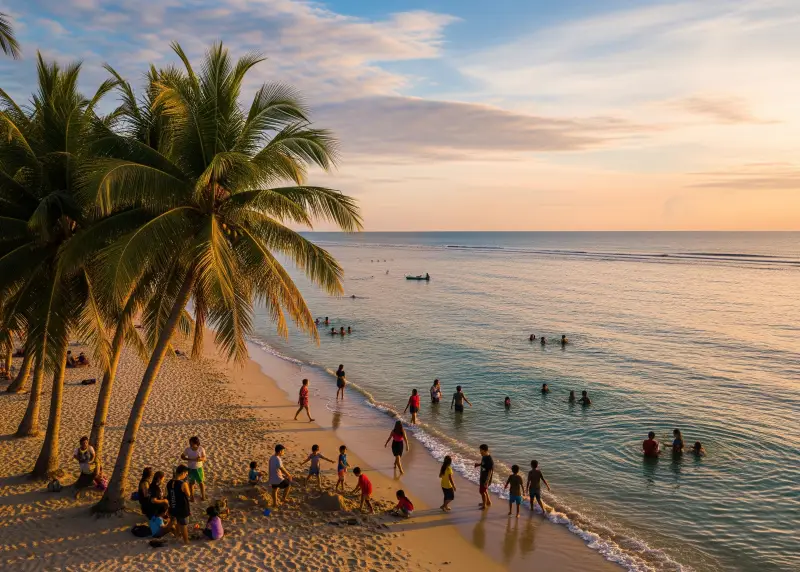
🎉 Free and Low-Cost Activities
Travel doesn’t always have to mean shelling out for expensive tours. Across the Philippines, there are countless free or low-cost experiences that let you explore more deeply while spending less.
Swimming at Public Beaches – Many coastal towns have stretches of sand that are free to access. From hidden coves in Batangas to long white shores in Mindoro, these are often just as beautiful as private resorts.
Hiking Local Trails – Most provinces have beginner-friendly trails that don’t require permits or guides. Short treks to waterfalls, hills, or rice terraces are usually free, aside from small community fees.
Visiting Churches and Cultural Landmarks – The Philippines is rich in history, and many centuries-old churches, plazas, and ancestral houses are open to the public without charge.
Joining Barangay Fiestas – Community celebrations are everywhere, often filled with music, games, and free food shared by locals. They’re one of the most authentic ways to experience Filipino hospitality.
Exploring Markets and Night Bazaars – Walking through palengkes or night markets gives you a taste of local life, with affordable street food, crafts, and souvenirs that cost far less than mall prices.
Free and low-cost activities don’t just help you save money-they often become the most meaningful memories of your trip. A swim on a public beach feels just as refreshing as an exclusive resort, while wandering through a fiesta or night bazaar immerses you in everyday Filipino life. Hiking trails and heritage sites let you discover the country’s natural beauty and cultural roots without draining your budget, proving that some of the best travel moments don’t have to cost much at all.
📊 Table 2: Sample Budget for a 5-Day Trip (2025)
| Expense Category | Estimated Cost | Notes |
|---|---|---|
| Transport | ₱2,500 | Mix of buses, ferries, budget flights |
| Accommodation | ₱2,000 | 4 nights in hostels |
| Food | ₱1,500 | Carinderia + street food |
| Activities | ₱1,000 | Free hikes + low-cost tours |
| Miscellaneous | ₱1,000 | Souvenirs + fees |
| Total | ₱8,000 | Approx. budget for 5 days |
🛡 Travel Hacks for Pinoy Budget Travelers
Traveling on a budget isn’t just about picking the cheapest option available – it’s about stacking strategies that, when combined, save you thousands of pesos without ruining your experience. For Filipinos (and even foreign travelers in the Philippines), the following hacks can make a huge difference in cutting costs while still enjoying your trip.
Book flights during promo season (watch for Piso Fares)
Every budget traveler in the Philippines knows the magic words: Piso Fare. Airlines like Cebu Pacific and AirAsia regularly hold seat sales where base fares start as low as ₱1, though you still pay taxes and fees. These promos often drop months in advance, so the trick is to stay alert – download the airline apps, join travel Facebook groups, and sign up for newsletters. Remember, Piso Fare seats sell out within minutes, so always keep your ID and payment details ready when booking.
Travel off-peak to avoid inflated prices
Peak seasons like Christmas, Holy Week, and summer (March–May) see ticket and hotel prices double, sometimes even triple. By scheduling trips during off-peak months – like June, September, or November – you’ll find cheaper fares, more hotel availability, and fewer crowds at tourist spots. Not only do you save money, but you also get a more relaxed travel experience.
Always compare accommodation apps before booking
Never settle for the first deal you see. Apps like Agoda, Booking.com, Airbnb, and even Facebook groups for travelers often list the same property at different prices. Some apps also give discounts if you book multiple nights or use coupons. A 5-minute comparison can save you hundreds or even thousands of pesos, especially for longer stays.
Bring your own snacks to avoid overpriced food in terminals
Airports, bus stations, and ferry terminals are notorious for inflated food prices. A bottle of water that costs ₱20 outside can go for ₱50–₱80 inside. By packing biscuits, sandwiches, or even your own refillable water bottle, you cut unnecessary expenses and avoid hunger during delays. It’s a small hack, but if you’re traveling often, the savings add up significantly.
Negotiate transport fares before riding tricycles
In many provinces, tricycle fares are not standardized, and tourists (especially foreigners) are often charged more. To avoid disputes, always ask for the price before getting in. If possible, check with locals about the standard fare. This simple step not only saves money but also prevents arguments with drivers.
Travel with friends to split costs
One of the most effective ways to lower expenses is to travel as a group. Accommodation, tours, and even food sharing become cheaper when costs are divided. For example, a van rental to a tourist site might cost ₱3,000, but if you’re five people, that’s just ₱600 each. Group travel also makes experiences more fun and memorable.
Frequently Asked Questions about Budget Travel in the Philippines
- Is it really possible to travel in the Philippines on a tight budget without sacrificing fun?
Yes! With some planning, smart choices, and flexibility, you can see amazing places, eat good food, and have great experiences without spending a fortune. Using local transport, staying in hostels or homestays, and choosing free or low-cost activities make a big difference. - What’s the cheapest way to get around the Philippines?
Jeepneys, buses, and ferries (or RORO ships) are among the cheapest options. Budget flights during promos help too if booked ahead. For short trips, tricycles or motorbikes work well-just negotiate the fare first. - Where should I stay if I want to keep lodging costs really low?
Hostels, guesthouses, homestays, or capsule hotels are your best bets. These tend to be much cheaper than big hotels, often come with basic comfort, and give you that local vibe. Bonus: Airbnb or rented apartments can be smart if you’re traveling as a group. - How can I eat on a budget but still taste local flavors?
Eat where locals do-carinderias, turo-turo stalls, street food, and market eateries. Meals there can cost ₱50–₱100 and still be filling and authentic. Carry water in a refillable bottle and snacks so you won’t have to buy overpriced food at airports or terminals. - What kinds of activities can I do that don’t cost much (or anything) but are still memorable?
Plenty-public beaches, hikes, local trails, heritage sites, churches, watching sunsets, wandering through markets or night bazaars, joining barangay fiestas. These give a sense of place without billeting a large expense. - How much should I expect to spend on a 5-day budget trip in the Philippines?
For 5 days, with budget transport, hostels, local eats, and low-cost or free activities, you’re looking at around ₱8,000 total. This includes everything: accommodation, food, transport, even some souvenirs or extra bits. - How do I catch flight promos like the famous “Piso Fare”?
Be alert: download airline apps, follow their social media, subscribe to newsletters, and join local travel promo or backpacker groups. Promos are often limited in stock and time, so have your payment info ready and be able to act fast. - Is it safer and cheaper to travel off-peak rather than during festivals or holidays?
Definitely. Prices for flights, accommodations, and even food tend to spike during peak seasons like holiday periods. Off-peak also means fewer crowds, more space, and sometimes even better service. Traveling in months like June, September, or November can give you much better deals. - For Filipinos from provinces, do digital wallets (GCash, Maya etc.) help when traveling to remote areas?
Yes, they’re getting more accepted, even in many smaller towns, especially for things like convenience stores or transport. Still, though, always carry cash or small bills-some vendors and remote areas don’t accept digital payments. - What mindset do I need to have to really travel cheaply but enjoyably in the Philippines?
Be flexible, open, and humble. Let go of needing luxury; value experiences over comfort. Embrace local ways (eating simple meals, using public transport), and find joy in authenticity. Sometimes the cheapest choice becomes your favorite memory.

🌏 Budget Travel as a Mindset
Traveling on a tight budget in the Philippines isn’t about cutting corners – it’s about choosing wisely. Every peso has power, and how you spend it shapes the kind of adventure you’ll have. By embracing local transport, eating home-style food, and prioritizing experiences over luxury, you don’t just save money – you connect more deeply with the country.
For many Filipinos, traveling frugally isn’t a trend – it’s a necessity. Yet, this necessity brings hidden advantages. You get closer to communities, discover places untouched by commercial tourism, and see the Philippines as locals live it daily. For foreigners, budget travel here offers a richer, more authentic encounter than any luxury resort could.
The key is planning ahead, staying flexible, and being resourceful. Whether you’re chasing waterfalls in Mindanao, island-hopping in Palawan, or exploring Manila on foot, budget travel opens doors that money alone can’t. So pack light, bring an open mind, and remember: the Philippines is best experienced not through how much you spend, but through the memories you make along the way.
🧳 References
-
Lubd – 10 Insider Tips for Budget Travel in the Philippines 2025
-
TripZilla PH – Budget Travel Philippines: Solo Backpacker Tips
-
Nomadic Matt – How to Visit the Philippines on a Budget in 2025
-
Girl on a Zebra – My Complete Philippines Travel Guide
-
The Poor Traveler – Your Budget Travel Guides PH
-
PhilippinesIslandHopping.com – Backpacking Through the Philippines: Budget Tips




